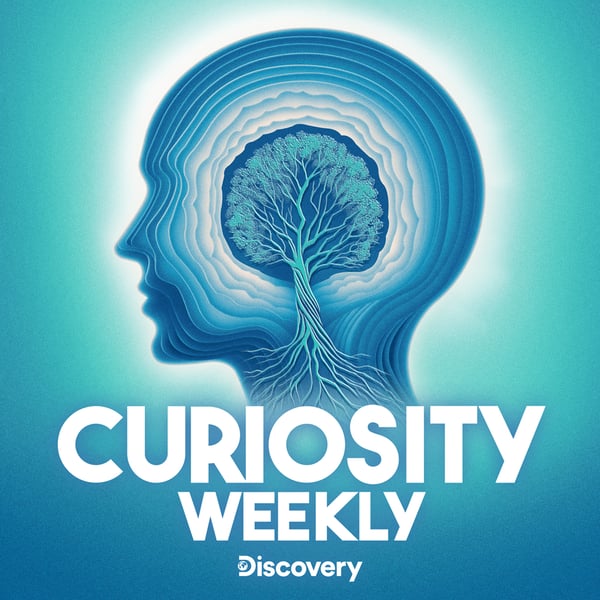World of Warcraft Could Help Fight COVID-19, Social Rejection Can Fuel Creativity, and What Mouse Facial Expressions Teach Us About Emotion
Curiosity Weekly
Warner Bros. Discovery
4.6 • 935 Ratings
🗓️ 20 May 2020
⏱️ 10 minutes
🧾️ Download transcript
Summary
Learn about how studying World of Warcraft helped researchers learn how to respond to the coronavirus pandemic; how scientists described mouse facial expressions for the first time; and how social rejection can fuel creativity.
Scientists studied a "pandemic" in World of Warcraft to learn how to fight a real virus by Grant Currin
- Fenlon, W. (2020, March 13). The researchers who once studied WoW’s Corrupted Blood plague are now fighting the coronavirus. Pcgamer; PC Gamer. https://www.pcgamer.com/the-researchers-who-once-studied-wows-corrupted-blood-plague-are-now-fighting-the-coronavirus/
- World of Warcraft experienced a pandemic in 2005. That experience may help coronavirus researchers. (2020, April 9). The Washington Post. https://www.washingtonpost.com/video-games/2020/04/09/world-warcraft-experienced-pandemic-2005-that-experience-may-help-coronavirus-researchers/
- Lofgren, E. T., & Fefferman, N. H. (2007). The untapped potential of virtual game worlds to shed light on real world epidemics. The Lancet Infectious Diseases, 7(9), 625–629. https://doi.org/10.1016/s1473-3099(07)70212-8
Scientists have described mouse facial expressions for the first time by Steffie Drucker
- The facial expressions of mice. (2020). EurekAlert! https://www.eurekalert.org/pub_releases/2020-04/m-tfe033120.php
- Dolensek, N., Gehrlach, D. A., Klein, A. S., & Gogolla, N. (2020). Facial expressions of emotion states and their neuronal correlates in mice. Science, 368(6486), 89–94. https://doi.org/10.1126/science.aaz9468
In some people, social rejection can fuel creativity by Kelsey Donk
- Khazan, O. (2020, March 16). Are Weird People More Creative? The Atlantic; The Atlantic. https://www.theatlantic.com/magazine/archive/2020/04/the-perks-of-being-a-weirdo/606778/
- Kim, S. H., Vincent, L. C., & Goncalo, J. A. (2013). Outside advantage: Can social rejection fuel creative thought? Journal of Experimental Psychology: General, 142(3), 605–611. https://doi.org/10.1037/a0029728
Subscribe to Curiosity Daily to learn something new every day with Cody Gough and Ashley Hamer. You can also listen to our podcast as part of your Alexa Flash Briefing; Amazon smart speakers users, click/tap “enable” here: https://www.amazon.com/Curiosity-com-Curiosity-Daily-from/dp/B07CP17DJY
Find episode transcript here: https://curiosity-daily-4e53644e.simplecast.com/episodes/world-of-warcraft-could-help-fight-covid-19-social-rejection-can-fuel-creativity-and-what-mouse-facial-expressions-teach-us-about-emotion
Hosted on Acast. See acast.com/privacy for more information.
Transcript
Click on a timestamp to play from that location
| 0:00.0 | Hi, you're about to get smarter in just a few minutes with Curiosity Daily from |
| 0:04.8 | Curiosity.com. I'm Cody Gough. And I'm Ashley Hamer. Today you learn about how |
| 0:09.2 | studying World of Warcraft helped researchers learn how to fight the coronavirus, how scientists described mouse facial expressions for the first time, |
| 0:17.0 | and how social rejection can fuel creativity. |
| 0:20.0 | When satisfy some curiosity. |
| 0:22.0 | You know the video game World of Warcraft? |
| 0:25.0 | It's an extremely popular, massively multiplayer online role-playing game |
| 0:30.0 | that might have caused your college roommate to fail a class or two. |
| 0:33.4 | And believe it or not, here's something else it did. |
| 0:35.9 | It helps researchers understand how to fight the coronavirus pandemic. |
| 0:40.5 | Yeah, let's talk about the corrupted blood incident. |
| 0:45.0 | On September 13, 2005, a plague devastated the cities of Ogramar and Iron Forge. |
| 0:52.0 | It quickly spread to other cities which made the number of deaths |
| 0:55.9 | skyrocket. Before long, more than 4 million were affected by the outbreak. Orgramar and Iron Forge may be fictional, but this digital |
| 1:05.3 | disease was real, even if it only existed in the online servers of World |
| 1:09.8 | of Warcraft. And in the years following this plague, researchers published multiple peer-reviewed papers about the unusual event to study how people behave when faced with an outbreak. |
| 1:21.0 | Like I said, incredible, right? So let me get into the details of what happened. |
| 1:26.1 | Unlike our current outbreak, the World of Warcraft pandemic really was the product of an |
| 1:31.1 | experiment gone wrong. It originated in an update to the game |
| 1:34.8 | that let experienced players encounter a winged serpent called Hakar the Soul Flair. |
| 1:40.9 | He would occasionally infect opponents with a digital disease called corrupted blood. |
| 1:46.0 | It wasn't a big deal for the powerful players who had earned access to the new area of the game. |
... |
Please login to see the full transcript.
Disclaimer: The podcast and artwork embedded on this page are from Warner Bros. Discovery, and are the property of its owner and not affiliated with or endorsed by Tapesearch.
Generated transcripts are the property of Warner Bros. Discovery and are distributed freely under the Fair Use doctrine. Transcripts generated by Tapesearch are not guaranteed to be accurate.
Copyright © Tapesearch 2025.

